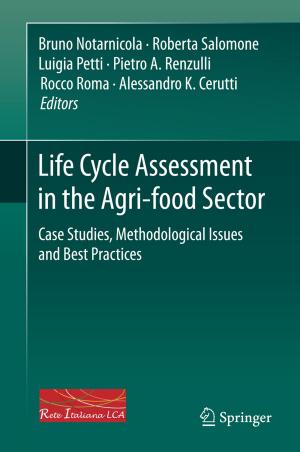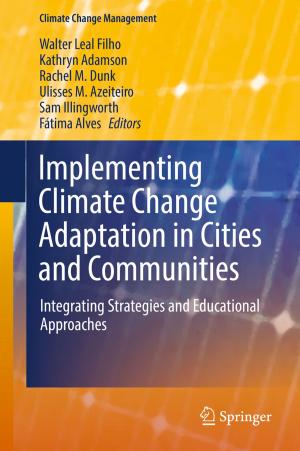Old World and New World Perspectives in Environmental Philosophy
Transatlantic Conversations
Nonfiction, Science & Nature, Nature, Environment, Environmental Conservation & Protection, Religion & Spirituality, Philosophy, Ethics & Moral Philosophy| Author: | ISBN: | 9783319076836 | |
| Publisher: | Springer International Publishing | Publication: | July 28, 2014 |
| Imprint: | Springer | Language: | English |
| Author: | |
| ISBN: | 9783319076836 |
| Publisher: | Springer International Publishing |
| Publication: | July 28, 2014 |
| Imprint: | Springer |
| Language: | English |
This is the first collection of essays in which European and American philosophers explicitly think out their respective contributions and identities as environmental thinkers in the analytic and continental traditions. The American/European, as well as Analytic/Continental collaboration here bears fruit helpful for further theorizing and research. The essays group around three well-defined areas of questioning all focusing on the amelioration/management of environmentally, historically and traditionally diminished landscapes. The first part deals with differences between New World and the Old World perspectives on nature and landscape restoration in general, the second focuses on the meaning of ecological restoration of cultural landscapes, and the third on the meaning of the wolf and of wildness. It does so in a way that the strengths of each philosophical school—continental and analytic—comes to the fore in order to supplement the other’s approach. This text is open to educated readers across all disciplines, particularly those interested in restoration/adaptation ecology, the cultural construction of place and landscape, the ongoing conversation about wilderness, the challenges posed to global environmental change. The text may also be a gold mine for doctoral students looking for dissertation projects in environmental philosophy that are inclusive of continental and analytic traditions. This text is rich in innovative approaches to the questions they raise that are reasonably well thought out. The fact that the essays in each section really do resonate with one another directly is also intellectually exciting and very helpful in working out the full dimensions of each question raised in the volume.
This is the first collection of essays in which European and American philosophers explicitly think out their respective contributions and identities as environmental thinkers in the analytic and continental traditions. The American/European, as well as Analytic/Continental collaboration here bears fruit helpful for further theorizing and research. The essays group around three well-defined areas of questioning all focusing on the amelioration/management of environmentally, historically and traditionally diminished landscapes. The first part deals with differences between New World and the Old World perspectives on nature and landscape restoration in general, the second focuses on the meaning of ecological restoration of cultural landscapes, and the third on the meaning of the wolf and of wildness. It does so in a way that the strengths of each philosophical school—continental and analytic—comes to the fore in order to supplement the other’s approach. This text is open to educated readers across all disciplines, particularly those interested in restoration/adaptation ecology, the cultural construction of place and landscape, the ongoing conversation about wilderness, the challenges posed to global environmental change. The text may also be a gold mine for doctoral students looking for dissertation projects in environmental philosophy that are inclusive of continental and analytic traditions. This text is rich in innovative approaches to the questions they raise that are reasonably well thought out. The fact that the essays in each section really do resonate with one another directly is also intellectually exciting and very helpful in working out the full dimensions of each question raised in the volume.















